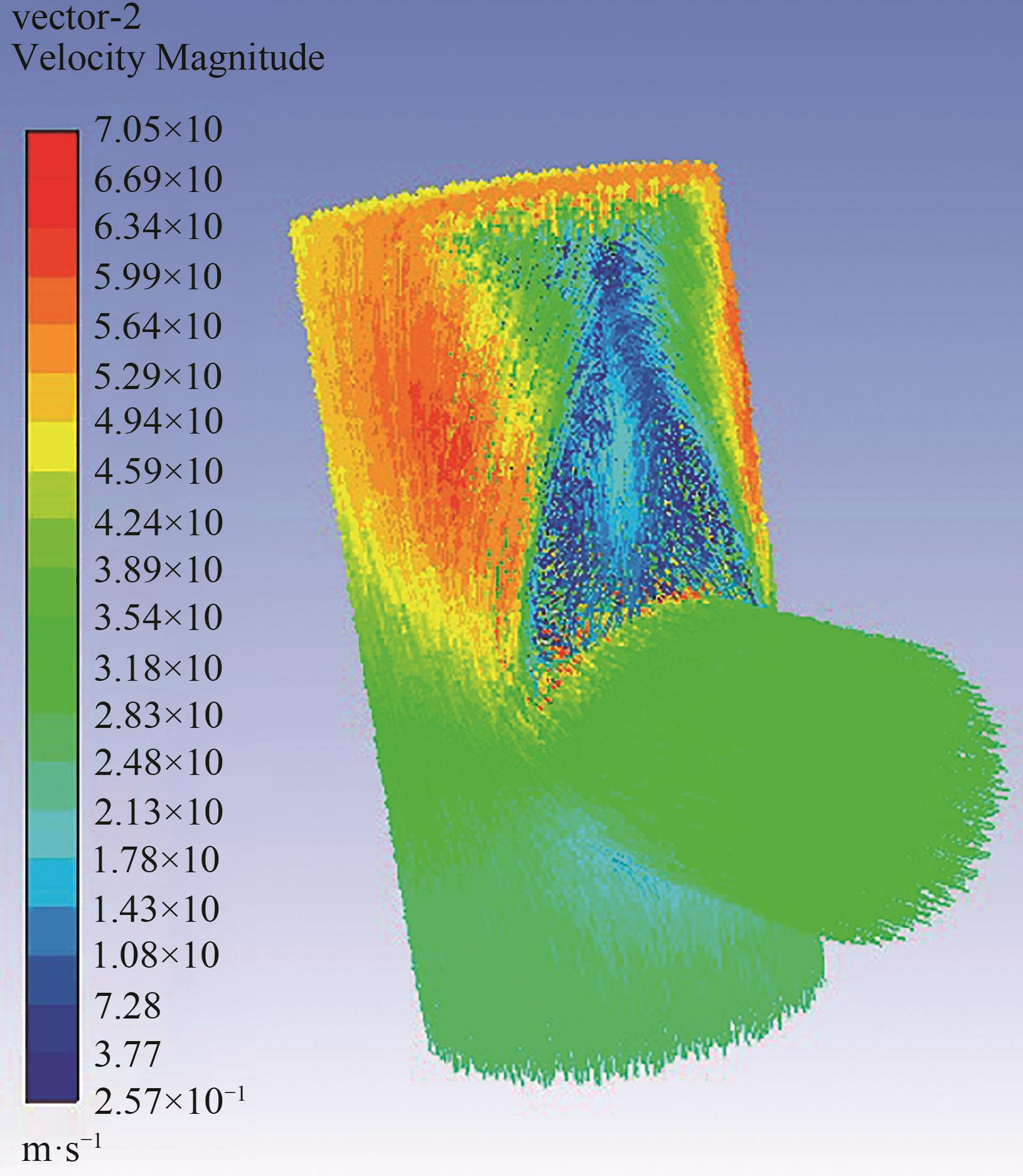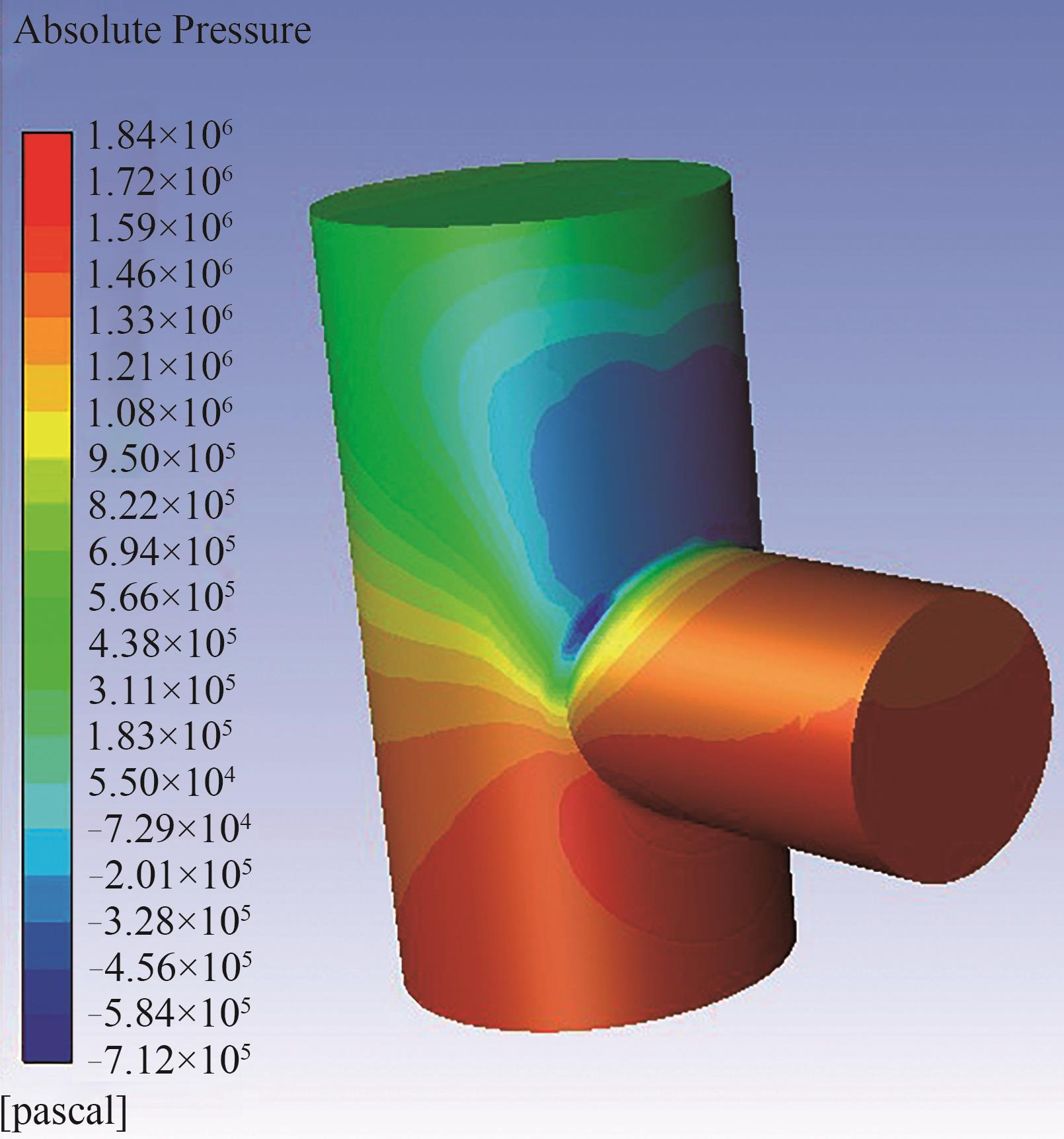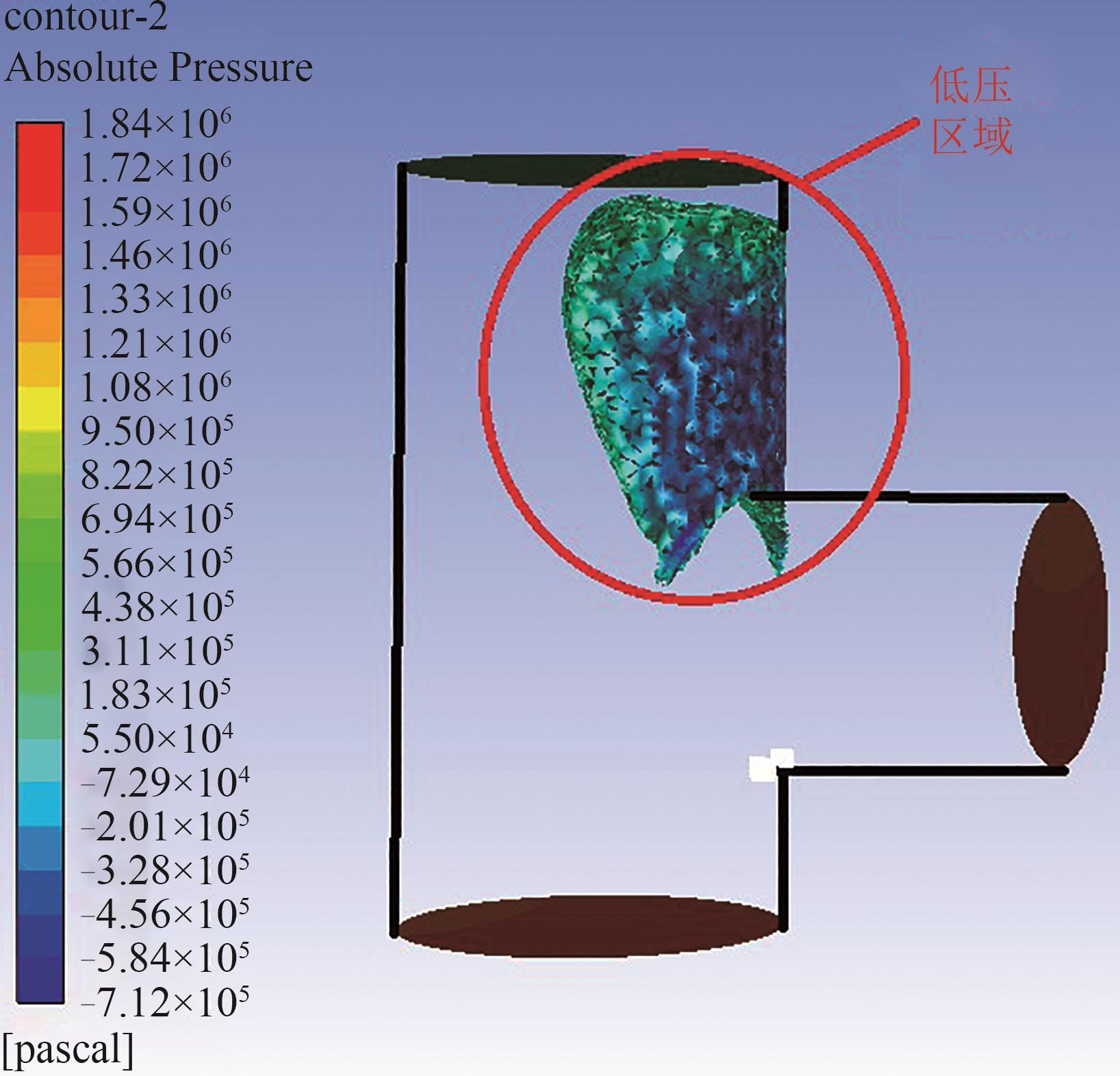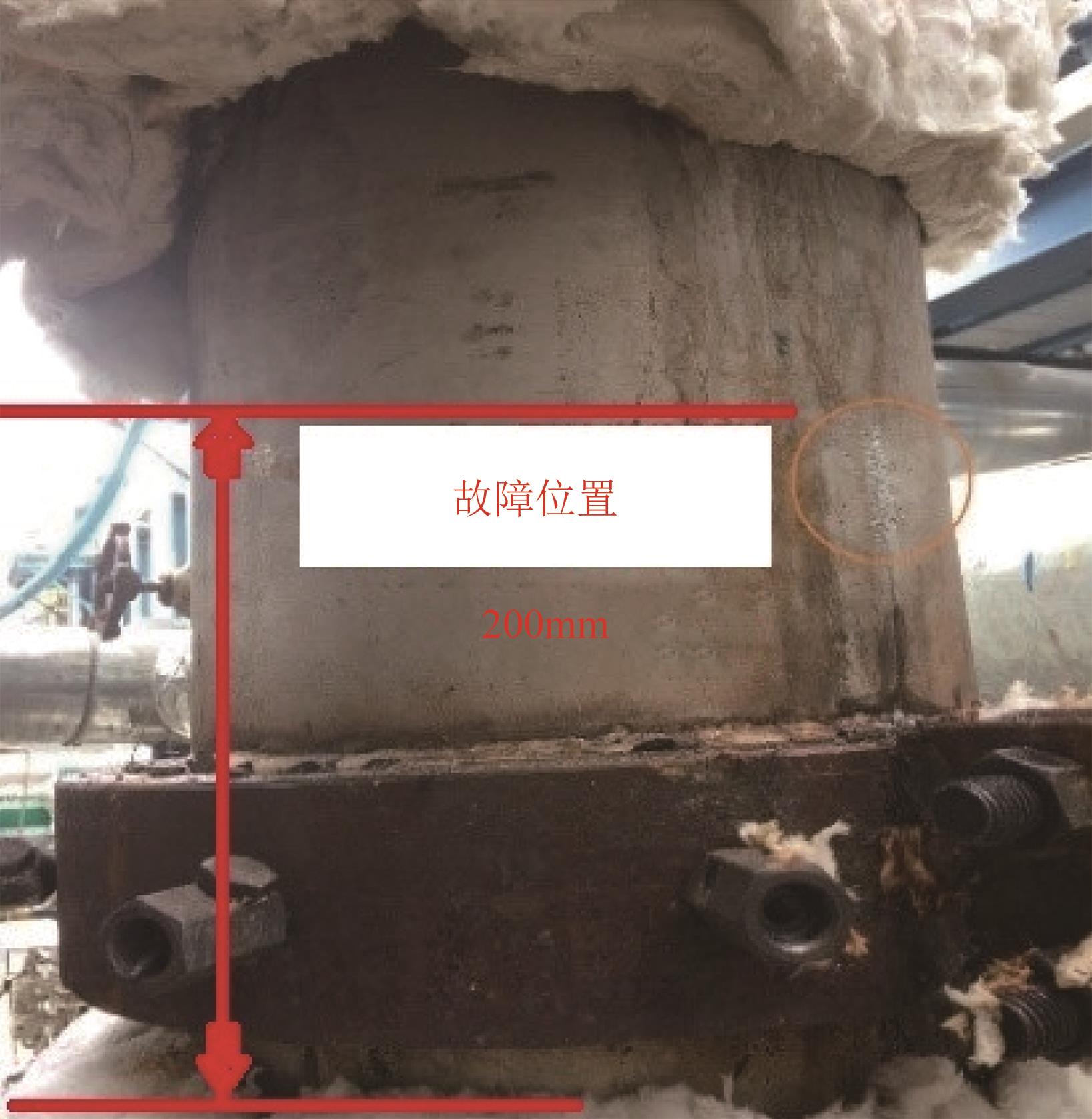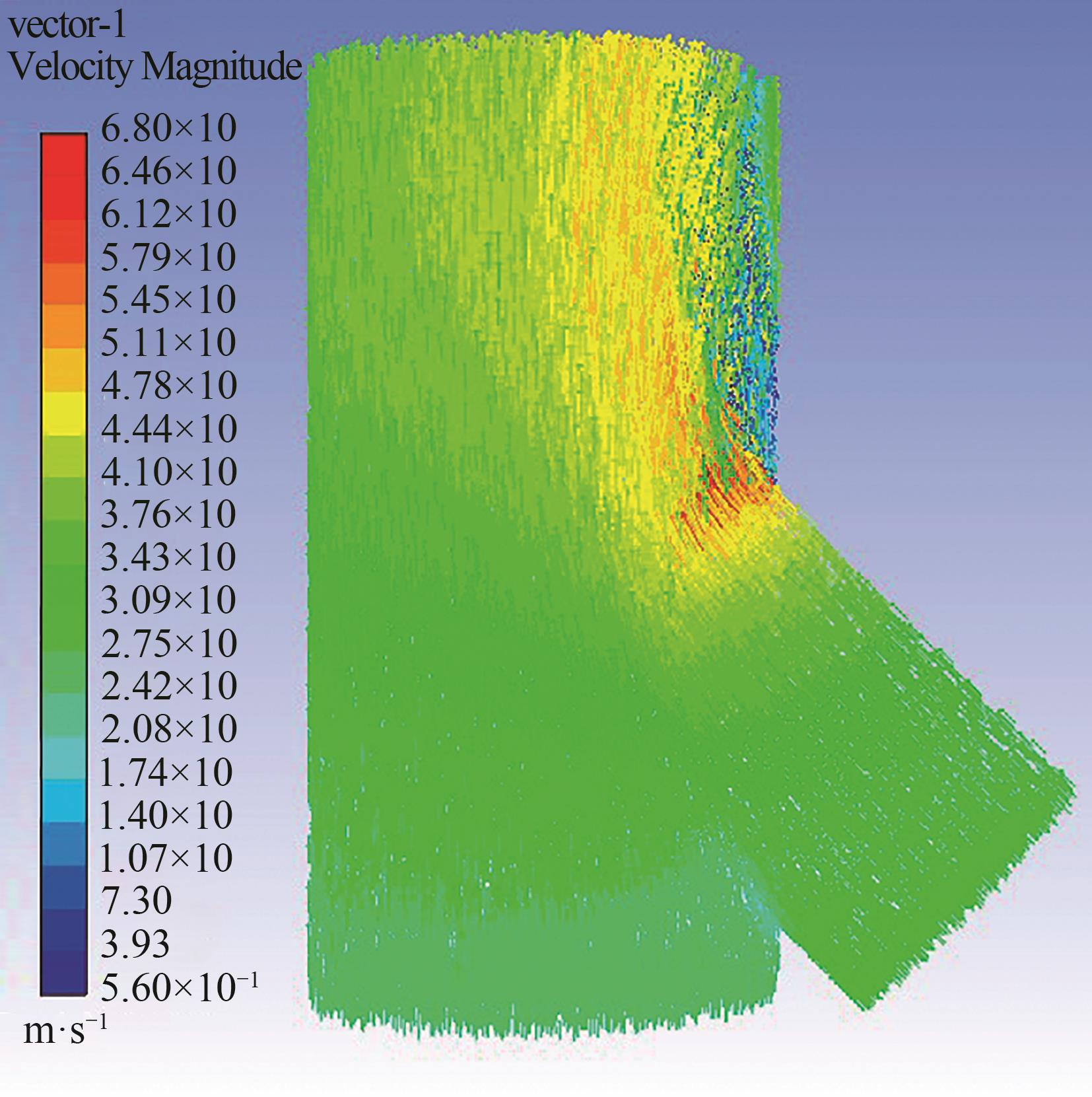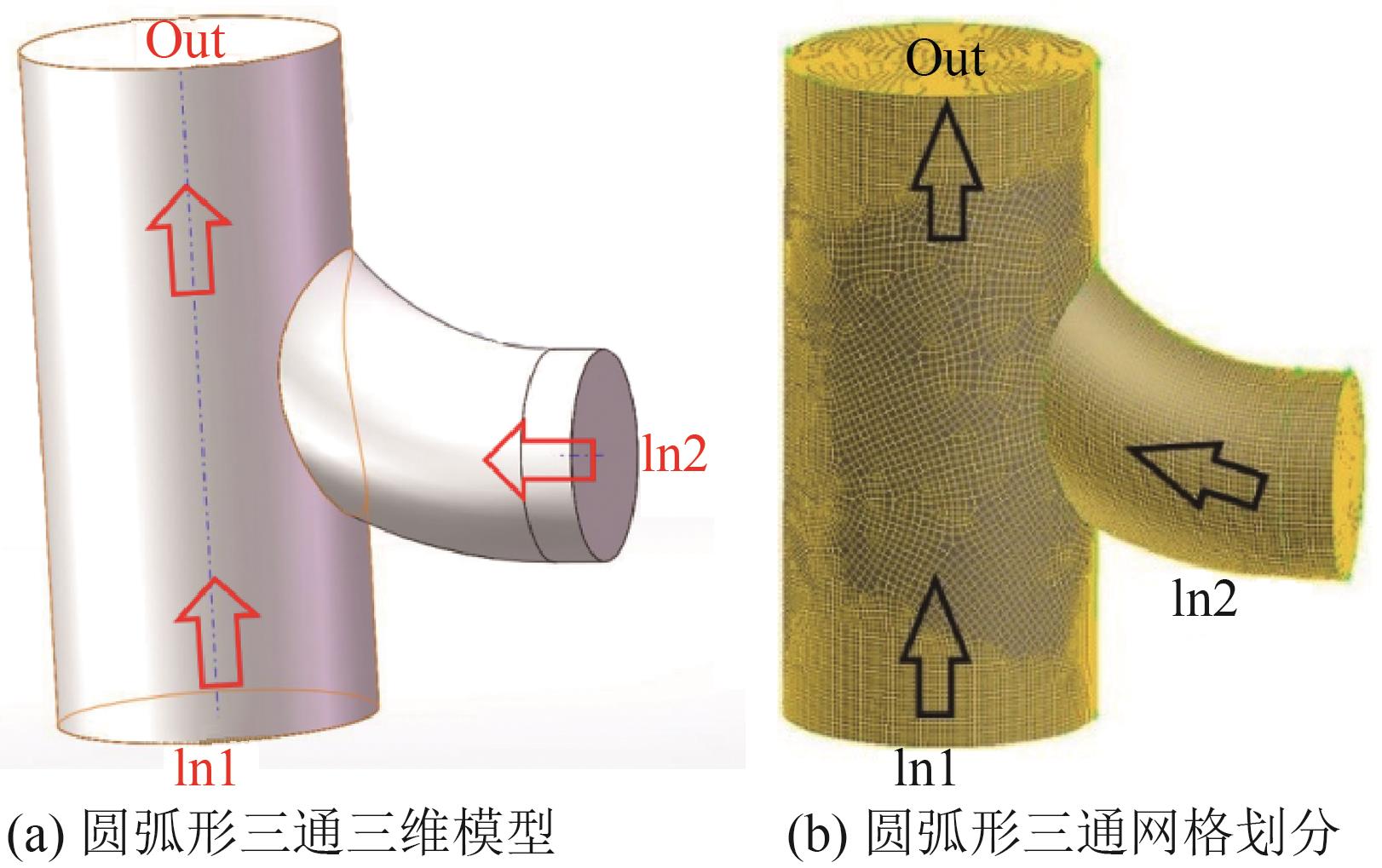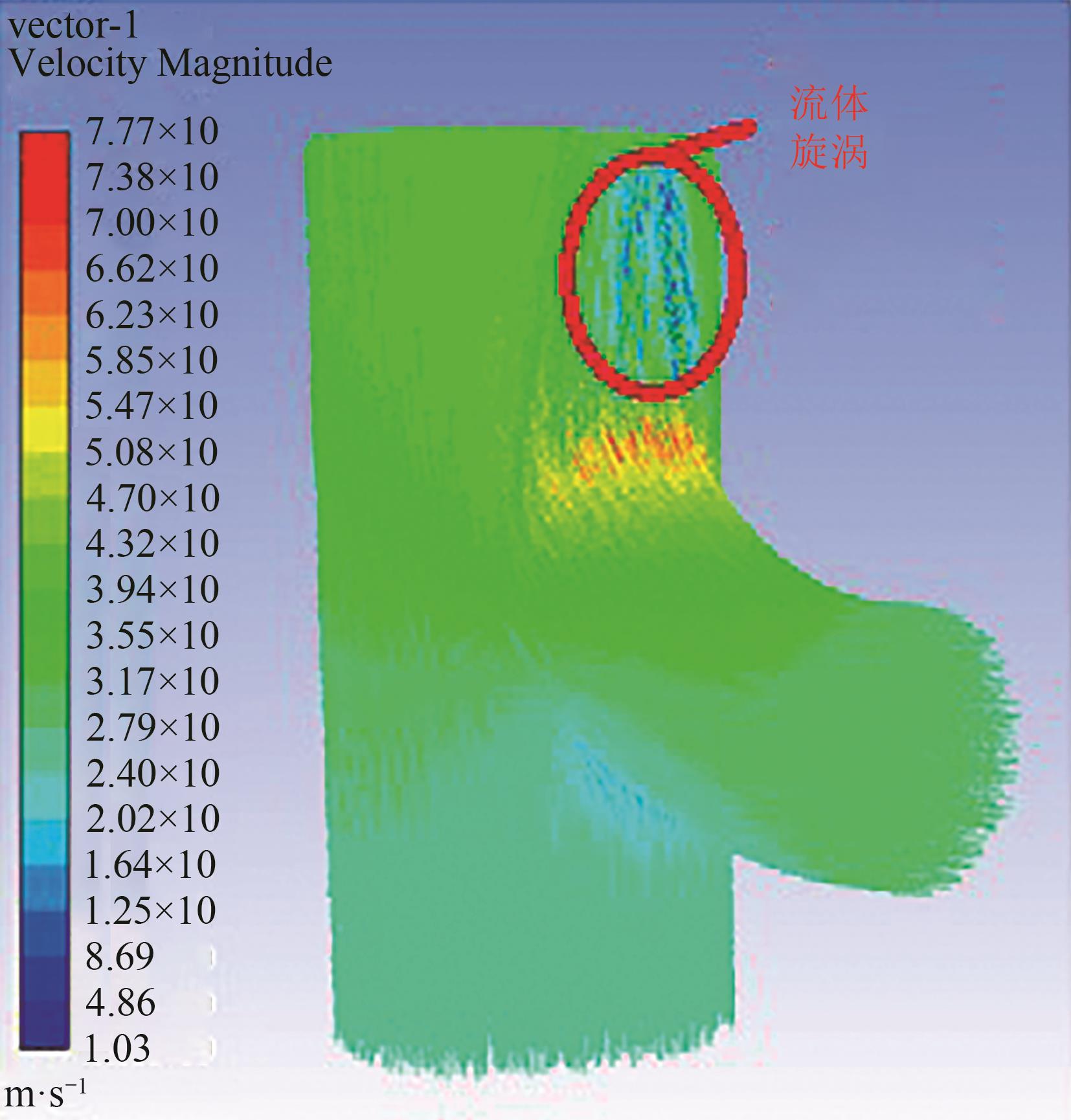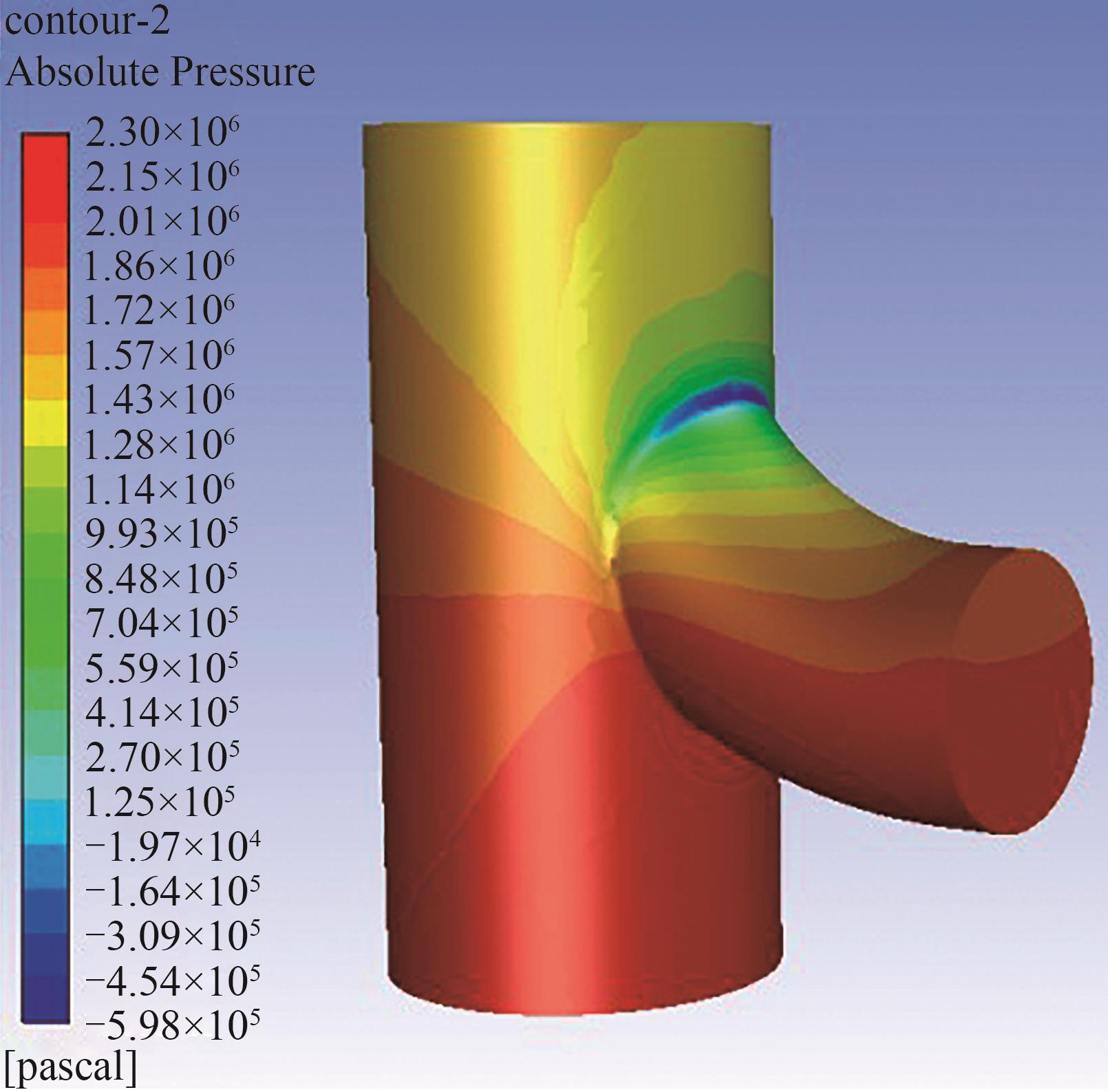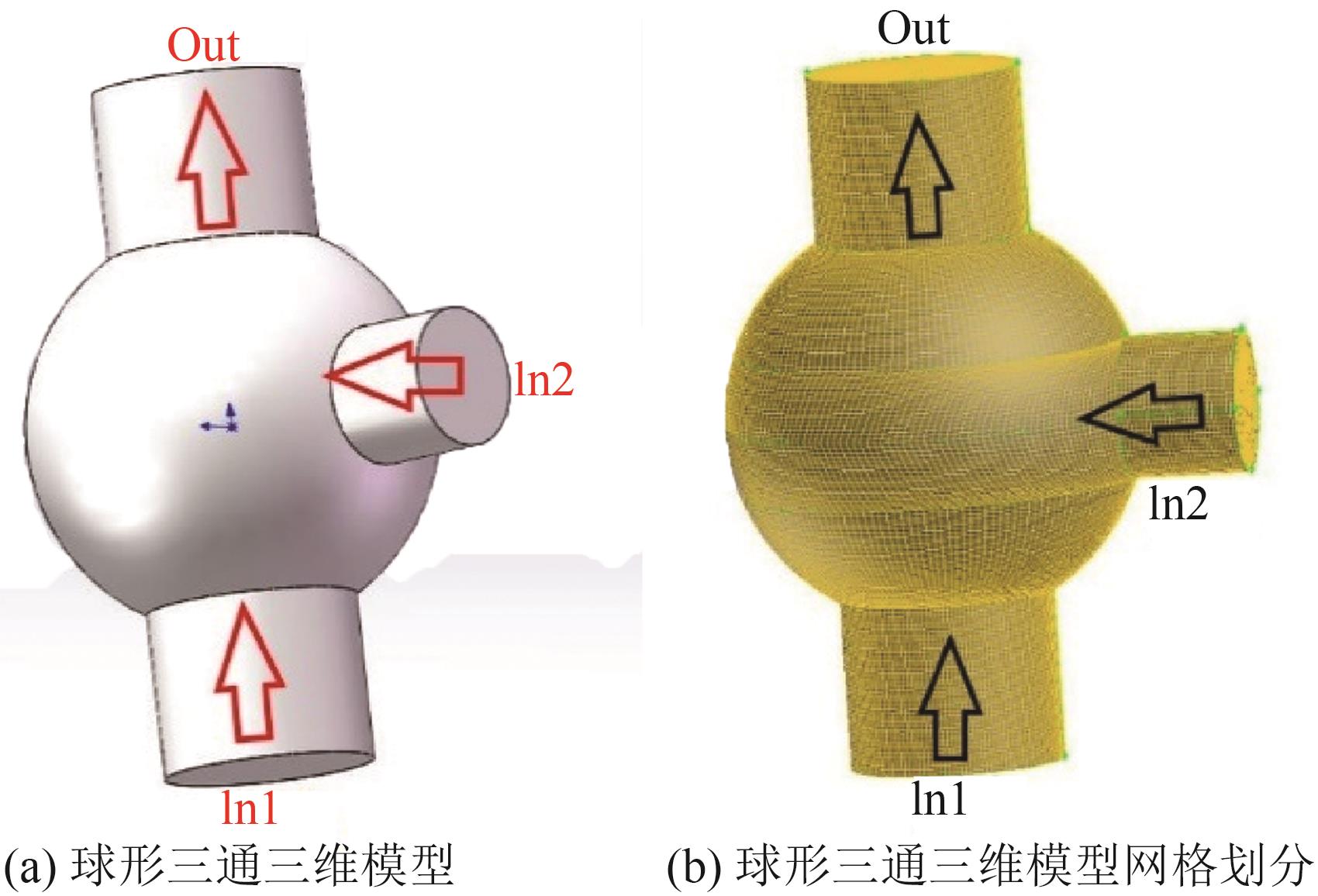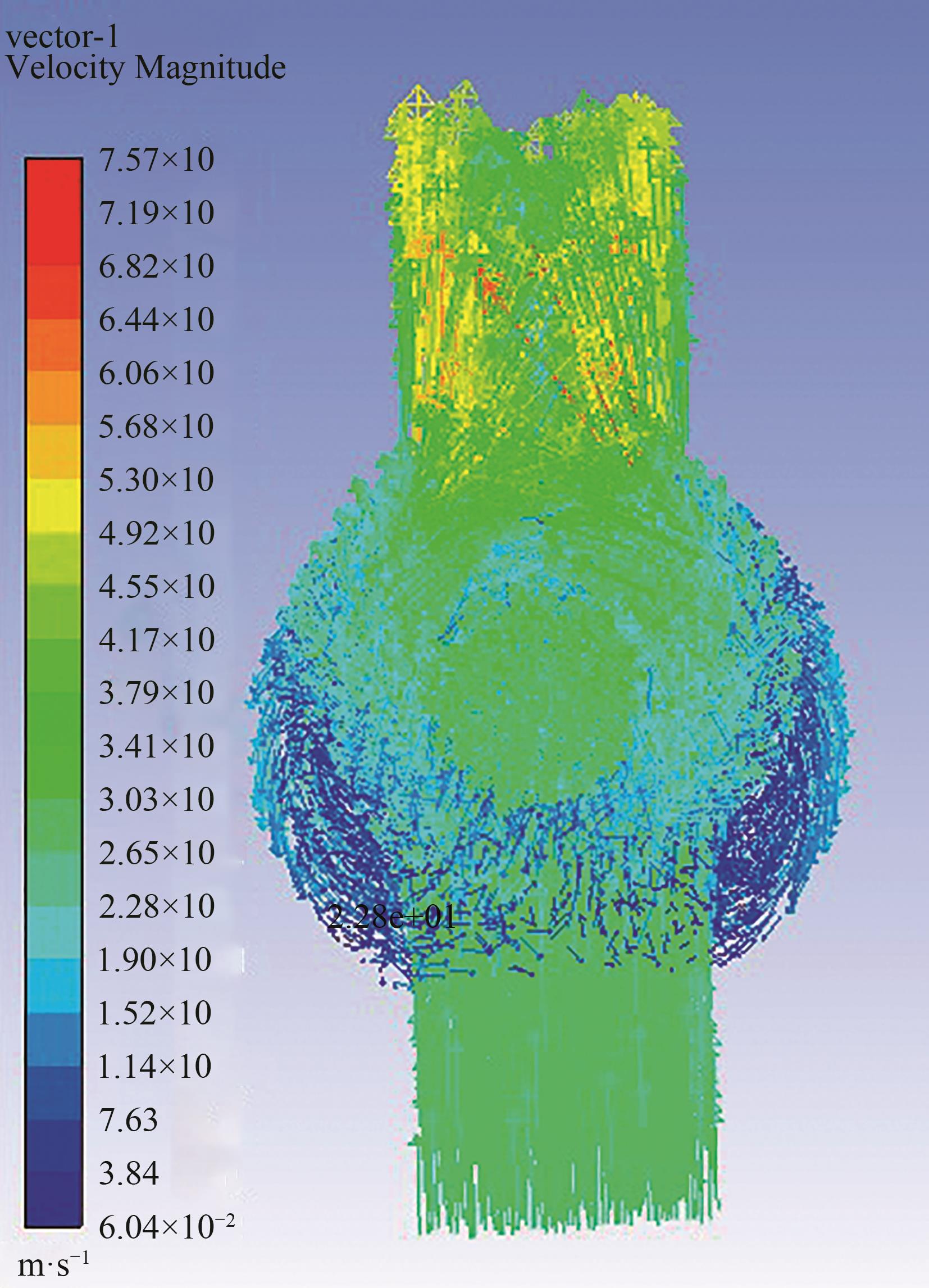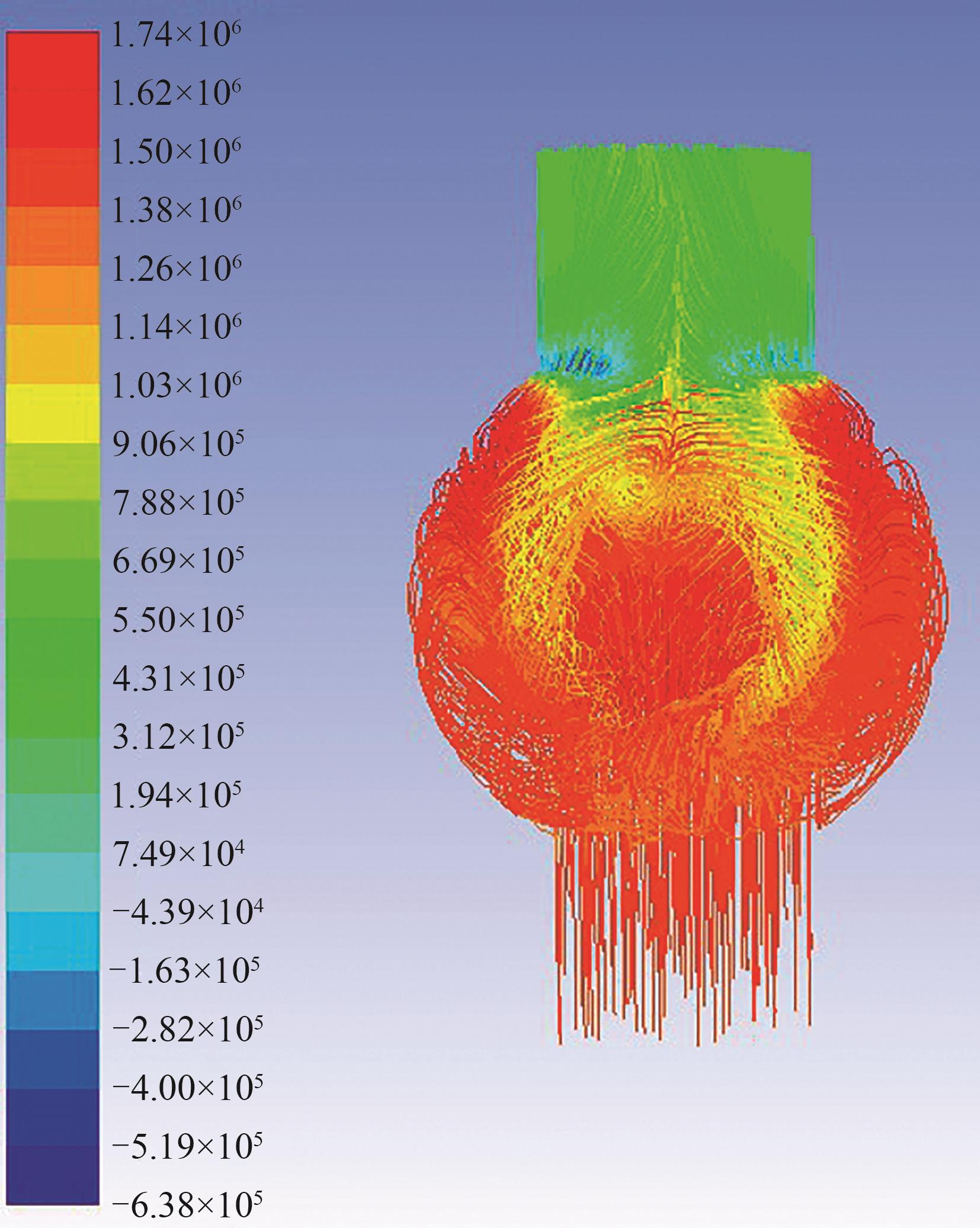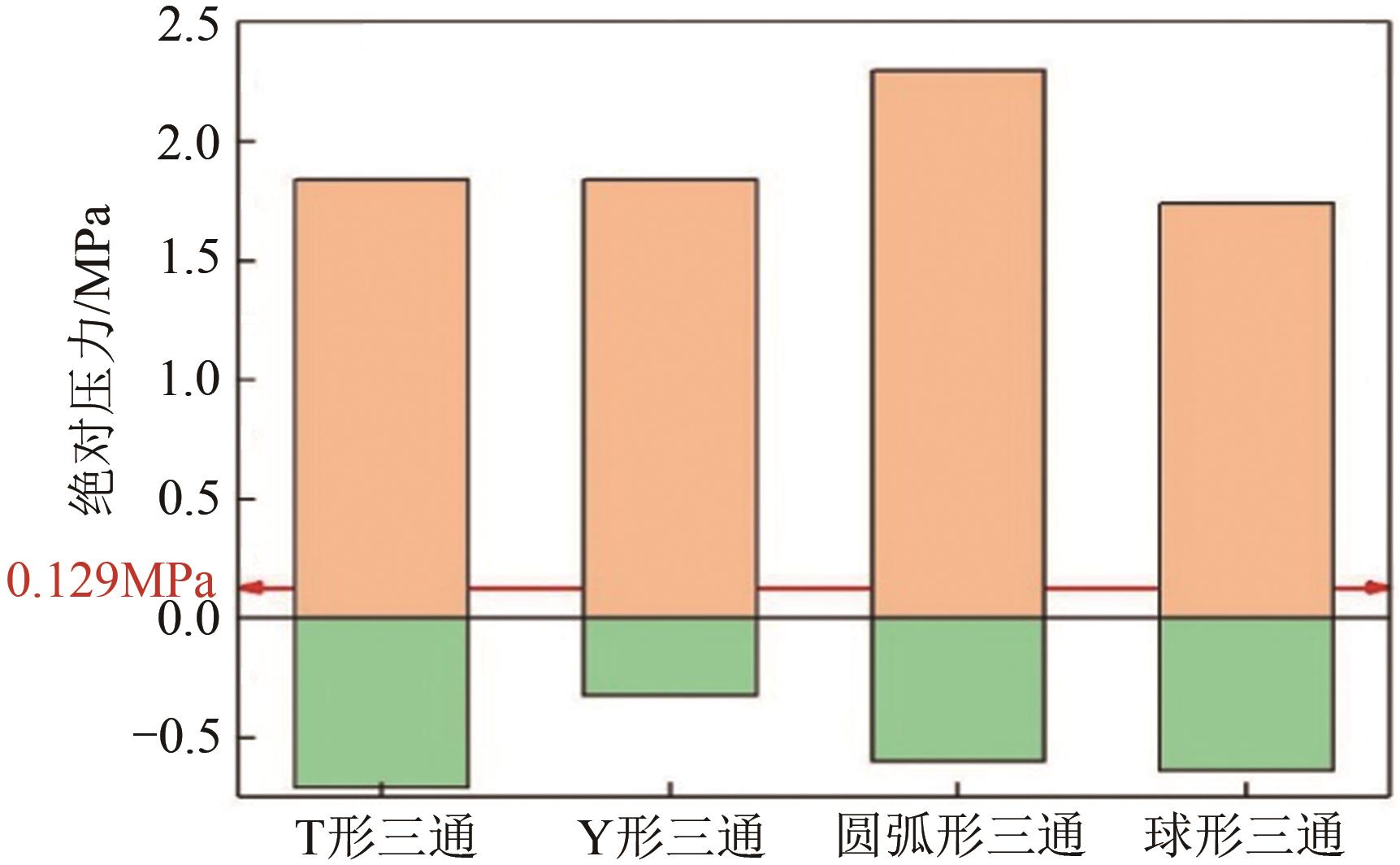化工进展 ›› 2021, Vol. 40 ›› Issue (S1): 32-42.DOI: 10.16085/j.issn.1000-6613.2019-2024
环氧乙烷装置T形三通管件故障原因分析与改进
- 北京化工大学化工安全教育部工程研究中心,北京 100029
-
收稿日期:2019-12-18修回日期:2021-06-08出版日期:2021-10-25发布日期:2021-11-09 -
通讯作者:何立东 -
作者简介:亢嘉妮(1994—),女,硕士研究生,研究方向为流体动力学、机械动力学。E-mail:nmkangjiani@sina.com 。 -
基金资助:2015年北京市共建-科研与研究生培养项目
Cause analysis and improvement of T-shaped tee fittings in ethylene oxide plant
KANG Jiani( ), HE Lidong(
), HE Lidong( ), FAN Wenqiang, YANG Yang
), FAN Wenqiang, YANG Yang
- Engineering Research Center of Chemical Safety Education Department, Beijing University of Chemical Technology, Beijing 100029, China
-
Received:2019-12-18Revised:2021-06-08Online:2021-10-25Published:2021-11-09 -
Contact:HE Lidong
摘要:
环氧乙烷(EO)是重要的石化产品,该产品易燃易爆,同时也是一种有毒的致癌物质。山东某化工厂EO生产装置T形三通管件材料与焊缝质量合格、管内介质无腐蚀性,但是频繁出现裂纹故障导致介质泄漏。T形三通裂纹故障原因不明导致该厂几乎半年更换一次T形三通管件,造成了严重的经济损失。为了解决该厂T形三通频繁失效问题,必须准确查明T形三通故障原因,分析T形三通故障机理成为解决问题的关键。本文运用流场分析软件,结合T形三通管线现场故障情况,分析该厂T形三通内部流场特性及故障机理:T形三通管件内部流场存在两个对称的漩涡,导致T形三通流场速度、压力分布不稳定,形成了大范围低于汽化压力的低压区,液体汽化形成了大量气泡,气泡在三通内壁破裂产生巨大的压力冲击,导致汽蚀破坏,使贫水管线T形三通产生裂纹。基于T形三通故障机理,本文提出了3种改进建议,使用Y形三通、圆弧形三通和球形三通3种三通结构代替T形三通结构,并分析这3种三通结构流场特性。数值计算结果表明:提出的3种三通结构能减小三通管件汽蚀破坏,其中Y形三通有微弱的流体漩涡产生,产生低压区体积最小,但管道入口方向需要改变;圆弧形三通结构不改变原来入口方向,流场压力、速度分布更稳定;球形三通流场绝对压力高于Y形和圆弧形,其结构出口及下游流场压力最稳定。本文为解决T形三通裂纹故障提供了新思路,为保障化工厂三通管件的安全提供了技术支撑。
中图分类号:
引用本文
亢嘉妮, 何立东, 范文强, 杨扬. 环氧乙烷装置T形三通管件故障原因分析与改进[J]. 化工进展, 2021, 40(S1): 32-42.
KANG Jiani, HE Lidong, FAN Wenqiang, YANG Yang. Cause analysis and improvement of T-shaped tee fittings in ethylene oxide plant[J]. Chemical Industry and Engineering Progress, 2021, 40(S1): 32-42.
| 参数类形 | 数值 |
|---|---|
| In1(MASS-FLOW-INLET) | 97.2kg·s-1 |
| In2(MASS-FLOW-INLET) | 47.92kg·s-1 |
| Out(OUTFLOW) | — |
| Energy | ON |
| 温度(In1) | 130℃ |
| 温度(In2) | 60℃ |
| 工作压力 | 1.5MPa |
| 介质材料 | water-liquid |
| 求解模形 |
表1 参数设计
| 参数类形 | 数值 |
|---|---|
| In1(MASS-FLOW-INLET) | 97.2kg·s-1 |
| In2(MASS-FLOW-INLET) | 47.92kg·s-1 |
| Out(OUTFLOW) | — |
| Energy | ON |
| 温度(In1) | 130℃ |
| 温度(In2) | 60℃ |
| 工作压力 | 1.5MPa |
| 介质材料 | water-liquid |
| 求解模形 |
| 4 | 敬钊, 温宝峰, 史伟, 等. 天然气三通管开裂成因分析[J]. 热处理技术与装备, 2018, 39(1): 65-67. |
| JING Zhao, WEN Baofeng, SHI Wei, et al. Cracking cause analysis on three-way pipe of nature gas[J]. Heat Treatment Technology and Equipment, 2018, 39(1): 65-67. | |
| 5 | 杨利民. 两相流新形分离器——T形三通管的研究进展[J]. 化工进展, 2008, 27(1): 45-49. |
| YANG Limin. Research advances in a new phase separator of two-phase flows—T-junction[J]. Chemical Industry and Engineering Progress, 2008, 27(1): 45-49. | |
| 6 | 中华人民共和国国家质量监督检验检疫总局, 中国国家标准化管理委员会. 锅炉、热交换器用不锈钢无缝钢管: [S]. 北京: 中国标准出版社, 2014. |
| General Administration of Quality Supervision, Inspection and Quarantine of the People's Republic of China, Standardization Administration of the People's Republic of China. Seamless stainless steel tubes for boiler and heat exchanger: [S]. Beijing: Standards Press of China, 2014. | |
| 7 | 钱锦烨, 关凯书. EO/EG装置不锈钢T形三通热疲劳开裂失效分析[J]. 压力容器, 2019, 36(11): 51-57. |
| QIAN Jinye, GUAN Kaishu. Failure analysis of thermal fatigue cracking of stainless steel T-tee in EO/EG device[J]. Pressure Vessel Technology, 2019, 36(11): 51-57. | |
| 1 | 王宜昊. EO/EG装置在线分析系统改进[J]. 化工自动化及仪表, 2012, 39(12): 1575-1578. |
| WANG Yihao. Improvement on online analysis system for EO/EG plant[J]. Control and Instruments in Chemical Industry, 2012, 39(12): 1575-1578. | |
| 2 | 高耸. 基于风险分析的环氧乙烷装置安全设计[J]. 安全、健康和环境, 2016, 16(3): 1-4. |
| GAO Song. Safety design of ethylene oxide plant based on risk assessment[J]. Safety Health & Environment, 2016, 16(3): 1-4. | |
| 8 | 孙鑫. T形三通和圆弧形三通流场的试验研究及数值模拟[D]. 乌鲁木齐: 新疆农业大学, 2009. |
| SUN Xin. Physical experiment and numerical simulation of “T and arc” shaped three-way pipe's flow field[D]. Urumqi: Xinjiang Agricultural University, 2009. | |
| 9 | 曹海兵, 高莉丽. 不同结构三通管内流体流动特性数值模拟[J]. 广东化工, 2016, 43(13): 72-73. |
| CAO Haibing, GAO Lili. Numerical simulation on flow characteristics of different three-way pipe[J]. Guangdong Chemical Industry, 2016, 43(13): 72-73. | |
| 10 | 刘培坤, 胡兆文, 杨兴华, 等. 两种弯头的数值模拟及磨损预测[J]. 现代矿业, 2015, 31(5): 167-169, 189. |
| LIU Peikun, HU Zhaowen, YANG Xinghua, et al. Numerical simulation and erosion prediction of the two kinds of elbow[J]. Modern Mining, 2015, 31(5): 167-169, 189. | |
| 11 | 王智勇. 基于FLUENT软件的水力空化数值模拟[D]. 大连: 大连理工大学, 2006. |
| WANG Zhiyong. Numerical simulation of hydrodynamic cavitation based on Fluent[D]. Dalian: Dalian University of Technology, 2006. | |
| 12 | 李鑫, 张攀, 陈光辉, 等. 液相中气泡上升行为与界面传质: 实验研究与数值计算[J]. 化工进展, 2019, 38(2): 740-751. |
| LI Xin, ZHANG Pan, CHEN Guanghui, et al. Rising behavior of bubbles and interfacial mass transfer in liquid: experimental study and numerical simulation[J]. Chemical Industry and Engineering Progress, 2019, 38(2): 740-751. | |
| 13 | 邹智鑫, 王合旭, 蒋彦龙, 等. T形三通管冷热流体掺混数值模拟[J]. 计算机辅助工程, 2019, 28(1): 46-52. |
| ZOU Zhixin, WANG Hexu, JIANG Yanlong, et al. Numerical simulation of cold-hot fluid mixing of T-junction[J]. Computer Aided Engineering, 2019, 28(1): 46-52. | |
| 14 | 巩启涛, 杨俊红, 韩奎, 等. 大管径T形三通数值模拟及局部阻力特性分析[J]. 动力工程学报, 2016, 36(9): 753-758, 764. |
| GONG Qitao, YANG Junhong, HAN Kui, et al. Characteristic analysis on the flow and local resistance in large pipe tees[J]. Journal of Chinese Society of Power Engineering, 2016, 36(9): 753-758, 764. | |
| 15 | DULAR M, PETKOVŠEK M. Cavitation erosion in liquid nitrogen[J]. Wear, 2018, 400/401: 111-118. |
| 16 | KRELLA A K, ZAKRZEWSKA D E. Cavitation erosion-phenomenon and test rigs[J]. Advances in Materials Science, 2018, 18(2): 15-26. |
| 17 | 周宇通, 郑宏晔, 胡洁梓, 等. 燃机电厂304不锈钢三通管应力腐蚀开裂的原因[J]. 腐蚀与防护, 2018, 39(3): 243-246. |
| ZHOU Yutong, ZHENG Hongye, HU Jiezi, et al. Stress corrosion cracking analysis of a 304 stainless steel three-way pipe in a gas turbine power plant[J]. Corrosion & Protection, 2018, 39(3): 243-246. | |
| 18 | 王淼. 射流场中单个气泡破裂行为的机理和模形[D]. 北京: 北京化工大学, 2018. |
| WANG Miao. Mechanism and model of single bubble breakup in jet flow field[D]. Beijing: Beijing University of Chemical Technology, 2018. | |
| 19 | 李根生, 沈晓明, 施立德, 等. 空化和空蚀机理及其影响因素[J]. 石油大学学报(自然科学版), 1997, 21(1):97-102. |
| LI Gensheng, SHEN Xiaoming, SHI Lide, et al. Review of studies on cavitation and cavitation erosion[J]. Journal of the University of Petroleum,China, 1997, 21(1):97-102. | |
| 20 | 高松. 基于Fluent在盐湖地区气力输送弯头的流场数值模拟比较[J]. 当代化工研究, 2018(9): 77-79. |
| GAO Song. The numerical simulated comparison of pneumatic conveying elbow based on fluent flow field in salt lake region[J]. Modern Chemical Research, 2018(9): 77-79. | |
| 21 | 刘培坤, 胡兆文, 杨兴华, 等. 两种弯头的数值模拟及磨损预测[J]. 现代矿业, 2015, 31(5): 167-169, 189. |
| LIU Peikun, HU Zhaowen, YANG Xinghua, et al. Numerical simulation and erosion prediction of the two kinds of elbow[J]. Modern Mining, 2015, 31(5): 167-169, 189. | |
| 22 | 何世春. 球形弯头原理及在气力输送中的应用[J]. 水泥, 1997(6): 18-20. |
| HE Shichun. Principle of spherical elbow and its application in pneumatic conveying [J]. Cement, 1997(6): 18-20. | |
| 3 | 陆平. EO反应器制造过程中管接头连接的质量控制[J]. 化学工程与装备, 2017(6): 176-177. |
| LU Ping. Quality control of pipe joint connection in EO reactor manufacturing process[J]. Chemical Engineering & Equipment, 2017(6): 176-177. |
| [1] | 王云飞, 秦蕊, 郑利军, 李焱, 李清平. 旋转填充床CFD模拟研究进展[J]. 化工进展, 2023, 42(S1): 1-9. |
| [2] | 孙继鹏, 韩靖, 唐杨超, 闫汉博, 张杰瑶, 肖苹, 吴峰. 硫黄湿法成型过程数值模拟与操作参数优化[J]. 化工进展, 2023, 42(S1): 189-196. |
| [3] | 罗成, 范晓勇, 朱永红, 田丰, 崔楼伟, 杜崇鹏, 王飞利, 李冬, 郑化安. 中低温煤焦油加氢反应器不同分配器中液体分布的CFD模拟[J]. 化工进展, 2023, 42(9): 4538-4549. |
| [4] | 卜治丞, 焦波, 林海花, 孙洪源. 脉动热管计算流体力学模型与研究进展[J]. 化工进展, 2023, 42(8): 4167-4181. |
| [5] | 陈仪, 郭耀励, 叶海星, 李宇璇, 牛青山. 二维纳米材料在渗透汽化脱盐膜中的应用[J]. 化工进展, 2023, 42(3): 1437-1447. |
| [6] | 侯婉, 陈汇龙, 程谦, 陈英健, 卫泽鹏, 赵斌娟. 高温密封润滑膜汽液固流动特性数值计算分析[J]. 化工进展, 2023, 42(2): 699-710. |
| [7] | 张国春, 周志辉, 吴红丹. 基于α-Al2O3载体管的新型MXene膜异丙醇脱水性能[J]. 化工进展, 2023, 42(10): 5381-5389. |
| [8] | 邱沫凡, 蒋琳, 刘荣正, 刘兵, 唐亚平, 刘马林. 气固流化床化学反应数值模拟中颗粒尺度模型研究进展[J]. 化工进展, 2023, 42(10): 5047-5058. |
| [9] | 彭德其, 冯源, 王依然, 谭卓伟, 俞天兰, 吴淑英. 立式缩放管内液固颗粒群浓度分布与汇聚特性[J]. 化工进展, 2022, 41(9): 4662-4672. |
| [10] | 李想, 葛武杰, 马先果, 彭工厂. 高镍正极材料微裂纹诱导容量衰减的应对策略研究进展[J]. 化工进展, 2022, 41(8): 4277-4287. |
| [11] | 韩光鲁, 路宽, 吕杰, 张永辉, 陈墨涵. 二元醇共价交联羧基化石墨烯复合膜和正丁醇脱水性能[J]. 化工进展, 2022, 41(7): 3801-3807. |
| [12] | 古新, 张前欣, 王超鹏, 方运阁, 李宁, 王永庆. U形导流板换热器传热和阻力性能分析[J]. 化工进展, 2022, 41(7): 3465-3474. |
| [13] | 徐涵卓, 刘志浩, 孙宝昌, 张亮亮, 邹海魁, 罗勇, 初广文. 流体驱动旋转装备应用与数值模拟方法研究进展[J]. 化工进展, 2022, 41(6): 2806-2817. |
| [14] | 张安东, 李志合, 王丽红, 王绍庆, 梁昌明, 万震. 水相生物油原位汽化-催化重整制氢工艺优化[J]. 化工进展, 2022, 41(3): 1340-1348. |
| [15] | 陈龙, 李霞霞, 李伟祥, 戚锐, 邓鑫, 吴斌鑫. 聚丙烯非织造布熔喷过程的计算流体力学模拟研究进展[J]. 化工进展, 2022, 41(2): 537-553. |
| 阅读次数 | ||||||
|
全文 |
|
|||||
|
摘要 |
|
|||||


